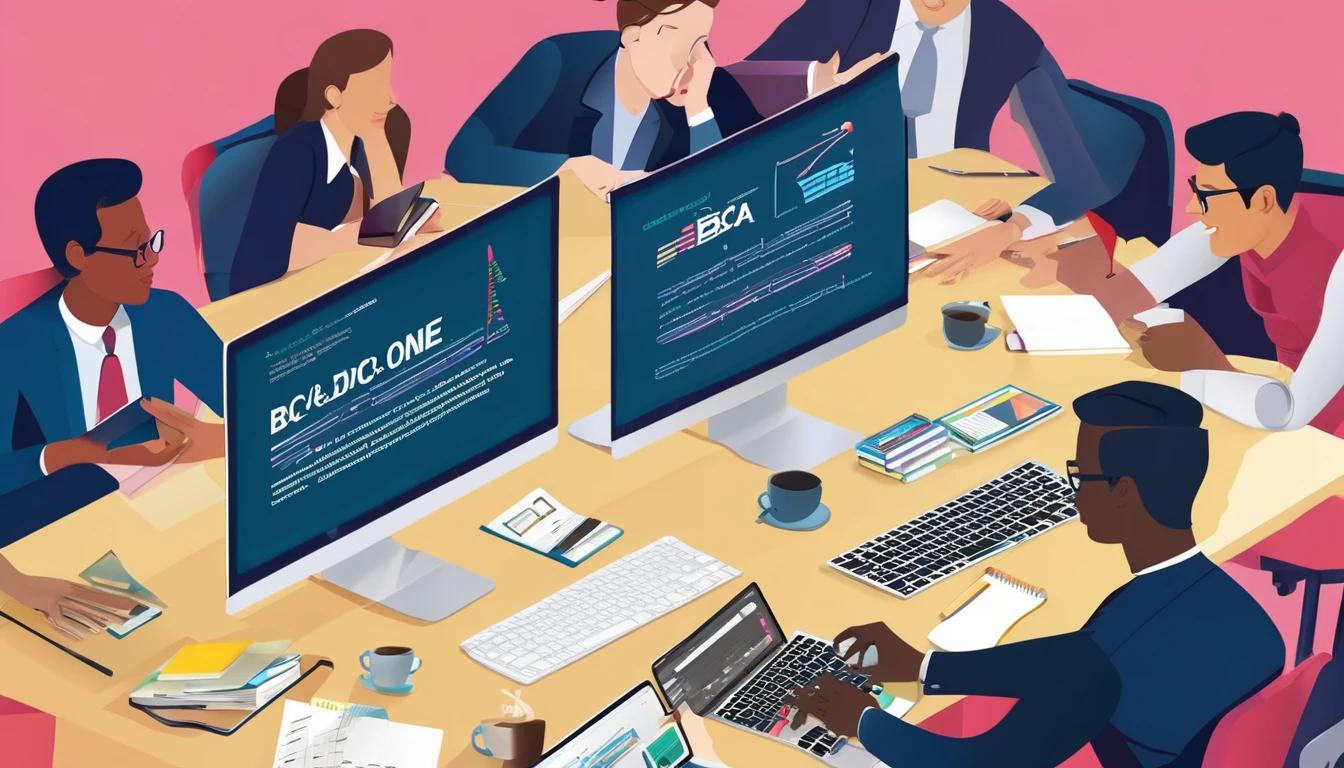Flexible, Affordable Online UG/PG/Diploma: MBA, BCA, MCA ROI

Flexible, Affordable Online UG/PG/Diploma: MBA, BCA, MCA ROI
Thinking about an online degree but not sure if it is worth the investment? You are not alone. With so many programs and price points, the real question most students ask is simple: what is the return on investment, and how fast will I see it?
In this guide, we break down the ROI of popular online programs such as MBA, BCA, and MCA, plus short professional diplomas. We will look at costs, salary outcomes, payback periods, and practical steps to boost your returns. If you are juggling work, family, and upskilling, this is for you.
What ROI really means in online education
ROI is not just about money. It is the total value you get from your degree compared to what you put in.
- Financial returns: salary increase, promotions, switching to higher paying roles.
- Career acceleration: leadership opportunities, access to better companies, stronger job security.
- Flexibility dividend: study without quitting your job, saving on relocation and living costs.
- Opportunity cost: what you do not lose by learning online, like a steady paycheck and experience.
When you measure ROI, include both the visible numbers and the hidden wins like confidence, network, and portable skills.
Who benefits most from online MBA, BCA, MCA, and diplomas
- Working professionals who want promotions or a domain switch without career breaks.
- Fresh graduates aiming to build a solid, job ready foundation in tech or management.
- Career returners or parents who need flexible schedules with minimal commute.
- Entrepreneurs and freelancers using structured learning to upskill and win better projects.
At a glance: fees, duration, and outcomes
Figures below are broad, India centric estimates for recognized online programs. Actuals vary by university, location, and your experience level. Treat them as directional, not promises.
| Program | Level | Typical duration | Indicative total fees | Entry background | Common roles | Median starting CTC range | Typical payback period |
|---|---|---|---|---|---|---|---|
| Online MBA | PG | 2 years | 1.5 L to 3.5 L | Any UG; work experience helpful | Business analyst, marketing manager, HRBP, operations manager | 6 LPA to 15 LPA | 8 to 24 months after completion |
| Online BCA | UG | 3 years | 0.6 L to 1.5 L | Class 12, any stream with math preferred | Junior developer, QA tester, support engineer | 3 LPA to 6 LPA | 6 to 18 months after year 3 internships or first job |
| Online MCA | PG | 2 years | 0.8 L to 2.0 L | BCA or BSc CS or equivalent | Software engineer, data engineer, cloud engineer | 5 LPA to 10 LPA | 6 to 18 months post graduation |
| Professional Diplomas or PG Certificates | Diploma | 3 to 12 months | 0.2 L to 0.8 L | UG ongoing or completed | Specialist roles like digital marketer, UI designer, data analyst | 3 LPA to 8 LPA | 3 to 12 months after completion |
Note: L stands for lakh and LPA stands for lakh per annum. Salary bands depend on city tier, skills, internships, projects, and the strength of your portfolio.
How to calculate ROI for your situation
Simple ROI and payback formulas
- Payback period in months equals Total program cost divided by Expected monthly salary increase.
- ROI percentage for first year equals Net salary gain in year one minus program cost, divided by program cost, multiplied by 100. Net salary gain equals Expected new salary minus Current salary over 12 months.
Quick examples
- MBA example: Cost 2.8 L. Current salary 5.0 LPA, expected post MBA 8.5 LPA. First year net gain is 3.5 L. ROI approximately 25 percent after repaying cost in the first year; payback roughly 10 months.
- BCA example: Cost 1.2 L across 3 years. Student starts with internships from year 2 earning stipends and lands 4.2 LPA. Payback is often under 6 months once a full time role begins.
- MCA example: Cost 1.6 L. Current salary 3.8 LPA, expected 7.2 LPA. Increment is 3.4 L per year. Payback is about 6 months and first year ROI exceeds 100 percent after cost recovery.
These are illustrations. Always personalize with your resume, location, and the market you target.
Deep dive: which program delivers what
Online MBA ROI: management skills without pausing your paycheck
Who it suits: professionals with 1 to 8 years of experience, career switchers to business roles, or entrepreneurs who want structured thinking.
Value drivers:
- Specializations that match market demand: business analytics, marketing, finance, HR, supply chain, product management.
- Portfolio of real projects: capstones with live data, growth plans, financial models.
- Career lift: lateral movement to better firms or managerial tracks in your current company.
Real story: Priya, a sales executive, studied online at night and applied analytics to her weekly pipeline reviews. Within 3 months of graduating, she moved into a key accounts role with a 45 percent hike. Her final capstone doubled as a pitch deck in interviews.
What to watch: check accreditation, faculty industry exposure, case led learning, and placement support. Skip bloated syllabi that do not add tools you will actually use at work.
Online BCA ROI: build a solid tech foundation
Who it suits: freshers who love problem solving and want to start coding without relocating or paying high campus fees.
Value drivers:
- Hands on projects in web dev, databases, and scripting. Your GitHub becomes your resume.
- Internships from year 2 and freelancing to build experience before graduation.
- Certifications in cloud, testing, or front end frameworks that make you stand out.
Arjun started BCA online while helping in his family shop during the day. He shipped two e commerce websites for local stores, showcased them as live projects, and converted his internship into a 4.8 LPA offer before his final semester. No gap years, no hostel costs.
Online MCA ROI: specialize and command a higher bracket
Who it suits: BCA or BSc CS grads who want deeper expertise and better roles in software, data, or cloud.
Value drivers:
- Advanced topics: data structures at scale, microservices, cloud deployment, and DevOps.
- Employability stack: algorithms practice, system design basics, and interview prep.
- Capstones that mirror production systems, not just toy apps.
Sana moved from QA to backend engineering after her MCA. She used evenings for labs and weekends for mock interviews. Four months post graduation, she landed 7.6 LPA at a product startup and negotiated remote flexibility.
Professional diplomas and PG certificates: quick wins
Who it suits: those who need a precise skill uplift for immediate outcomes such as switching to digital marketing, analytics, UI UX, or HR operations.
Value drivers:
- Short duration and lower cost with focused, tool heavy learning.
- Portfolio based evaluation: campaigns, dashboards, wireframes, or case studies.
- Stackability: combine two micro credentials to pivot faster.
Tip: choose programs with mentor feedback and industry projects. One strong portfolio can offset years of generic experience.
Hidden costs to plan for and how to save
- Technology: a reliable laptop, webcam, and high speed internet. Consider refurbished devices with warranty.
- Exams and proctoring: some universities charge per term exam fees. Read the fine print.
- Books and software: prefer open source tools and university provided licenses.
- Time cost: block study hours to avoid last minute cramming that hurts grades and ROI.
- Travel or residencies: a few courses require short campus visits. Budget for those in advance.
Smart savings:
- Use no cost EMIs or staged fee plans if available from the university or banking partners.
- Check for merit scholarships, early bird discounts, alumni or corporate tie ups.
- Employer sponsorships: many companies reimburse learning tied to your role. Pitch a business case.
- Potential tax benefits may apply based on local regulations. Verify with a professional.
Maximizing ROI from day one
- Align your program with a clear goal: promotion, role switch, or freelance revenue.
- Verify recognition: choose universities approved by relevant national regulators and with transparent accreditation.
- Scan the curriculum: is it current and project heavy, with tools used in the market today.
- Leverage internships and live projects: treat every assignment as portfolio material.
- Network intentionally: attend virtual events, alumni meets, and industry webinars. Many hires happen via referrals.
- Track metrics: maintain a learning log, project list, and a skills matrix to show growth in interviews.
- Practice interviews early: do mock rounds monthly, not just before placements.
University comparison checklist
| Parameter | What to check | Why it matters |
|---|---|---|
| Accreditation and recognition | Listed by national regulators and authorized to offer online degrees | Ensures degree validity and employer acceptance |
| Curriculum currency | Updated syllabi, industry projects, tool coverage | Keeps you job ready |
| Faculty and mentors | Blend of academic experts and practitioners | Bridges theory and real world |
| Career services | Placement support, interview prep, alumni network | Shortens job hunt time |
| Flexibility | Weekend classes, recorded lectures, app access | Helps working learners stay consistent |
| Assessment | Open book vs proctored, project based evaluation | Reflects how you work on the job |
| Student reviews | Outcomes, teaching quality, support responsiveness | Reveals on ground realities |
Sample weekly study plan for working learners
This rhythm prevents burnout and sustains momentum.
- Weeknights: 60 to 90 minutes for lectures and notes, Monday to Thursday.
- Friday evening: 45 minutes of recap and quiz practice.
- Saturday: 2 to 3 hours of project work or coding labs.
- Sunday: 1 hour of revision plus a mock interview or problem set.
Pro tip: use a two by two grid to prioritize tasks by importance and urgency. Your energy, not just time, drives consistency.
Quick ROI scenarios side by side
The table below shows how fees and salary jumps translate into payback. Adjust with your own numbers.
| Program | Total fees | Current salary | Expected salary | Annual increase | Payback months |
|---|---|---|---|---|---|
| MBA | 2.5 L | 5.0 LPA | 8.0 LPA | 3.0 L | 10 |
| BCA | 1.0 L | 0 LPA as fresher | 3.6 LPA | 3.6 L | 3 to 4 |
| MCA | 1.6 L | 3.5 LPA | 7.0 LPA | 3.5 L | 5 to 6 |
| Diploma PG Cert | 0.5 L | 3.0 LPA | 4.2 LPA | 1.2 L | 5 to 6 |
Remember, ROI improves sharply when you pair coursework with visible outcomes: a live app, a marketing case that improved conversions, or a data dashboard with real insights.
Online vs on campus: where online often wins
- Lower total cost: you save on relocation, hostel, and daily commute.
- No career break: keep earning while learning, so the opportunity cost is lower.
- Geography proof learning: attend from anywhere and interview nationwide.
On campus has its own strengths like immersive peer life and labs. If your goal is ROI with minimal disruption, online is a strong contender.
Frequently asked questions
Are online degrees and diplomas valid for jobs
Yes, when offered by recognized universities and meeting national regulatory standards. Employers increasingly focus on skills and portfolios alongside your degree.
Can a non commerce graduate do an online MBA
Absolutely. Many MBA cohorts include engineers, arts graduates, and entrepreneurs. Bridging courses in accounting or statistics usually help.
Can I do MCA after BCA or BSc
Yes. If you have the required math or computing background, MCA is a natural progression for deeper specialization and higher pay bands.
Will I miss campus networking in an online program
You can still build a powerful network via live sessions, alumni groups, project teams, and hackathons. Be proactive and treat every classmate as a future referral.
How do I verify a program
Check the universitys recognition on official regulatory sites, read the program handbook, and scan independent student reviews to confirm support quality and outcomes.
Final thoughts: choose smart, learn consistently, and let results compound
If you pick a recognized online MBA, BCA, MCA, or a focused diploma, and back it with consistent practice and projects, ROI can be both fast and durable. The secret is clarity of goal, relevance of curriculum, and proof of skill.
Not sure which program aligns with your goals and budget? Share your background and plans with us, and we will help you compare universities, map costs, and estimate your personal payback timeline. Your next step could be the one that accelerates your career without pausing your life.

